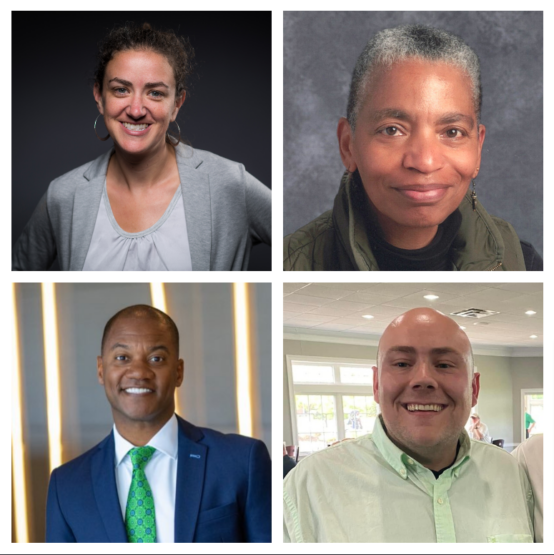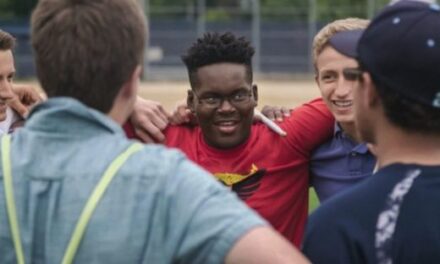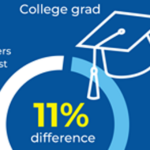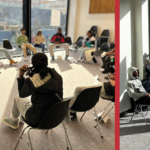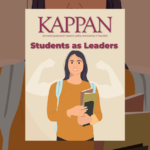The joy that comes from covering school culture wars with nuance and humility
By Courtney E. Martin
The headlines are filled with school board showdowns — the contentious resignation of a superintendent in Radford, Va., shouting over police presence in schools in Denver, Colo., and a mass brawl over LGBTQ+ issues outside a meeting in Glendale, Calif.
None of this surprises anyone who has been paying attention to educational debates these last few years. The polarization of our politics is everywhere on display.
I have logged countless hours watching red-faced parents scream on microphones in three-minute increments, all the while wondering: isn’t there another way?
The good news is that yes, there is another way, at least when it comes to reporting and writing about contentious issues and conflicts facing school boards.
What I learned in the weeks and months leading up to last week’s publication of Stopping culture wars in their tracks: How one city did it is that there are communities facing this embattled moment in education in ways other than screaming and fighting.
But we journalists have to have the time, space, and resources to look for the quiet responses underneath the cacophony.
Journalists have to have the time, space, and resources to look for the quiet responses.
The piece — about one community’s collective response to an anti-masking, anti-CRT flare-up in their district — was a restorative joy to work on.
The story I found was about how Marlon Styles, the first Black superintendent in Middletown, Ohio, handled this situation in his district.
Styles enlisted the support of the local, interracial ministerial alliance and what he calls his “positive gossipers,” a crew of local influencers whom he met with quarterly to share updates on Middletown schools.This unlikely strategy worked, squashing the debate before it eroded the district’s ability to focus on the kids.
The interfaith leaders came — in force — to every school board meeting for eight weeks, testifying a message of unity and diversity, and then did the same for their congregations.
The “positive gossipers” became Styles’ informal evangelizers when it counted most.
The piece was a restorative joy to work on.
The two key elements that made it possible for me to tell this story were funding from Berkeley’s Greater Good Science Center to explore a new lens through which to understand disagreement, called intellectual humility, and the Christian Science Monitor’s willingness to let me approach the story in a new and different way.
Intellectual humility is, at its essence, an approach by which your confidence about a topic matches your actual experience, knowledge, and wisdom on it. The Templeton Foundation and The Greater Good Science Center wanted to plant some seeds of intellectual humility in journalistic soil to see what kind of nuanced stories might take root.
The Christian Science Monitor, whose culture is centered on solutions reporting, gave me 3,000 words and travel expenses, plus assigned a photographer to come along.
They were open to a story about school boards that functioned differently from what we were seeing in the typical headlines. They saw that the story I had found had national significance, and also that its insights even transcended education.
They assigned me Trudy Palmer, a veteran, Black woman editor who I knew would bring journalistic chops and an experiential authority that would make this story infinitely better.

Above, clockwise from top left: Journalist Courtney E. Martin, Christian Science Monitor editor Trudy Palmer, Middletown pastor Scotty Robertson, and Middletown superintendent Marlon Styles.
Too often, stories like these are seen as “small” and “local,” relegated to regional papers or, if they make it to a national publication, framed as a feel-good brief, not a story with pragmatic and philosophical heft for a wide audience.
But our ability as journalists to paint an accurate and nuanced portrait of reality depends on our capacity to ask questions worthy of the human spirit and listen to varied answers from people who trust us enough to try to tell us their truths.
Too often, we are forced to produce stories that don’t honor the complexity of public education, the generational trauma through which caregivers see curricular choices, the simultaneous passion and burnout of teachers, the good intentions and struggles of district leaders, the challenge of not just talking a good game about systemic change, but actually making it happen, and so much more.
Too often, our own biases, lack of humility, and rushing egos get in the way. We go into a story with our minds already decided instead of truly listening. We look for characters to fit into a play we’ve already written in our heads before we’ve even done an interview or shown up at a school.
And there are real repercussions for this kind of reporting: when I contacted religious and educational leaders and caregivers for this story, some of them admitted they were relieved to see “Christian Science Monitor” in the subject line. One even told me point blank, “I would not have written back if you had been from The New York Times.”
“Why?” I asked.
“Because I wouldn’t trust that you’d really listen to me and try to understand,” she said.
Of course people feel wary of a media system that they see as structured to profit off of the reduction of their fears, with little bandwidth for hearing their confusion or drawing out their deeper hopes.
People feel wary of a media system that they see as structured to profit off of the reduction of their fears.
Since this story was about a community that resisted polarity by widening the frame, I knew the last thing I wanted to do was interview or write anyone into a corner.
I pursued conversations with parents nervous about what they had heard described as CRT and asked genuine questions about their fears and confusions, “looping back” to ensure I accurately understood.
One parent told me that she hadn’t testified at the school board meeting because she didn’t actually understand what CRT meant, but she was concerned with the idea of history teachers focusing repeatedly and/or exclusively on slavery.
I responded: “So let me make sure I’ve got this. You aren’t taking issue with CRT, which you aren’t actually familiar with, or the teaching of slavery at some point; you are more worried about it becoming the dominant subject overall in the U.S. history class your kid takes?”
That felt accurate to her and is, one might note, quite different from being against the teaching of slavery all up.
I also noted when there was something tender and instructive below the surface: one white mom told me she was so encouraged by her son’s interracial relationships and she was scared focusing too much on the history of slavery would confuse them about one another.
When I sat down at an O’Charley’s, fresh off the plane from Oakland, with white evangelical Pastor Scotty Robertson for my first in-person interview, my assumptions were almost immediately challenged. This guy who was raised in deep Appalachia to revere his whiteness and his masculinity had a screensaver of The Golden Girls on his computer and a library full of books about Christianity, homophobia, and sexism.
At an NAACP fundraiser, I sat next to a Black girl who hadn’t figured out a pathway to college just yet, but loved her experience growing up in Middletown. A serendipitous and subtle interaction like this helps fill out the real picture of a community. She was sort of hard to hear over the quiet roar of the crowd that night with her quiet voice. But she’s worth listening to, too.
The last thing I wanted to do was interview or write anyone into a corner.
It’s my hunch that if we, as journalists, can listen closely and patiently enough to get to these tender fears, we can more accurately and profoundly describe a larger truth about what is happening in American education. That description could just prime all of us for moving towards solutions more wisely.
When I was interviewing a member of the ministerial alliance, John Wagner, he spoke about the fact that he was the first white man to ever lead the alliance — a beautiful complement to Marlon Styles’ status as the first Black man to ever lead the district.
Both men told me about the lineage that had inspired them. For Wagner, it was his father, a disabled activist who was part of the Freedom Riders; for Styles, it was his grandmother, known as the community’s source for unconditional love and support.
Theoretically, we talk so much about history these days, but too rarely about how our histories — political and personal — intertwine and sometimes make beautiful new stories about what is unfolding in America.
Writing this story made me crave more like it — to move slower, to ask bigger, broader questions, to listen deeper, to earn people’s trust, to write narratives worthy of their complexity, ingenuity, and confusion, to be edited by someone different from me in important ways with similar goals of rigor and humanism.
Is there anything more rewarding as a journalist?
Courtney E. Martin is the author of “Learning in Public: Lessons for a Racially Divided America From My Daughter’s School” and a popular Substack newsletter called Examined Family. You can follow her on Twitter at @courtwrites.
Previously from this author
A white parent’s perspective on media coverage of Black schools like the one her daughter attends
Related from The Grade
Tabloid-style education news is all the rage
Demand concrete examples & avoid ‘emotionalism’: How to cover school culture war stories (2022)
The lamentable rise of ‘conflict’ journalism
Solutions stories that aren’t puff pieces
Hope — and skepticism — when covering school progress
ABOUT THE AUTHOR

The Grade
Launched in 2015, The Grade is a journalist-run effort to encourage high-quality coverage of K-12 education issues.


